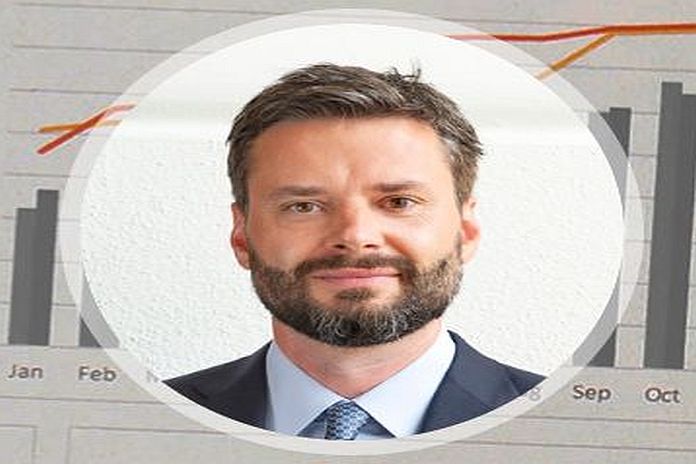The latest edition of the WTO’s “Global Trade Outlook and Statistics”, issued today, provides revised forecasts for global trade in 2023 and 2024.
- For 2023, we are downgrading our forecast for world merchandise trade volume growth to 0.8 per cent, less than half the 1.7 percent growth we forecast last April.
- However, the outlook for next year has not been downgraded and remains relatively strong. We predict 3.3 percent trade growth in 2024, slightly higher than our estimate of 3.2 percent in April.
So what has led to this revised forecast?

By Ralph Ossa
— The global situation over the past year
The downgrade is not entirely surprising as we had already considered the risks to be mostly on the downside in our April forecast.
Several factors have contributed to this revision. The global economy has been grappling with rising inflation and high interest rates since the fourth quarter of 2022, particularly in the European Union and the United States.
While falling energy prices and the end of Chinese COVID-19 pandemic restrictions raised hopes of a quick rebound, strained property markets have prevented a stronger recovery from taking root in China. Added to these factors, the ongoing Ukraine conflict also continues to weigh on the global economy.
The trade slowdown in the first half of 2023 appears to have involved a large number of economies and a wide array of goods, specifically certain categories of manufactured goods such as iron and steel, office and telecom equipment, textiles and clothing, although sales of passenger vehicles have surged in 2023.
The stronger growth predicted for 2024 is likely to be driven by increased trade in goods closely linked to the business cycle, such as machinery and consumer durables, which tend to recover when economic growth stabilizes.
Figures for world GDP growth at market exchange rates, anticipated to be 2.6 percent in 2023, show little change since the April forecast. However, shifts in the regional composition of growth could influence trade.
Specifically, GDP growth rates for North America in 2023 and 2024 have been revised upwards, from 1.5 percent and 1.0 percent, respectively, in April, to 2.2 per cent and 1.4 percent in the current report. Meanwhile, estimates for Asia for 2023 and 2024 have been revised downwards, from 4.2 percent and 4.3 percent, respectively, in April, to 4.1 percent and 4.0 percent. European GDP growth in 2023 should come in at 1.0 percent, up slightly from 0.9 percent in the April forecast, while growth in 2024 should be 1.4 percent, down from 1.8 percent previously. Finally, output in the Commonwealth of Independent States (CIS) region is expected to be stronger than previously forecast, both this year and next year.
In terms of imports, demand appears to be weakening in manufacturing economies, with import volumes in 2023 expected to contract by between 0.4 percent and 1.2 percent in North America, South America, Europe and Asia. Meanwhile, imports appear set to rise sharply in regions that export fuels disproportionately, thanks to the increased revenues flowing from higher prices.
Effects of trade fragmentation on the global economy
Many people may be wondering how much of the current trade slowdown is due to trade fragmentation, possibly as a result of rising geopolitical tensions, and how much is due to tighter financial conditions as countries around the world raised interest rates to fight inflation.
The report suggests that, while we do see initial signs of fragmentation, we do not see evidence of broad-based de-globalization.
For example, the share of intermediate goods in world trade, which provides an indication of the health and extent of global supply chains – a key indication of the extent of trade fragmentation – fell to 48.5 percent in the first half of 2023, having averaged 51.0 percent over the previous three years. While this suggests that supply chains may be contracting, it may also simply reflect higher commodity prices as these have a greater influence on the cost of intermediate goods than on final goods costs.
A possible indication of an increase in near-shoring is the recent decline in the share of Asian trading partners in US trade in parts and accessories, which is an important component of intermediate goods. However, while this share fell from 43 percent in the first half of 2022 to 38 percent in the first half of 2023, it remains close to the pre-pandemic (2019) share of 39 percent.
Similarly, the share of politically like-minded trading partners (as measured by United Nations voting patterns) in US total trade recently rose to 77 percent in the first half of 2023, from 74 percent in the first half of 2022. Again, while this could signal increased friend-shoring, in fact the 2023 share is very close to the 2019 share of 77 percent.
These findings are in line with the results we presented in the 2023 World Trade Report on 12 September 2023.
While they do not yet suggest broad-based de-globalization, nevertheless, we will continue to monitor these trends carefully going forward.





